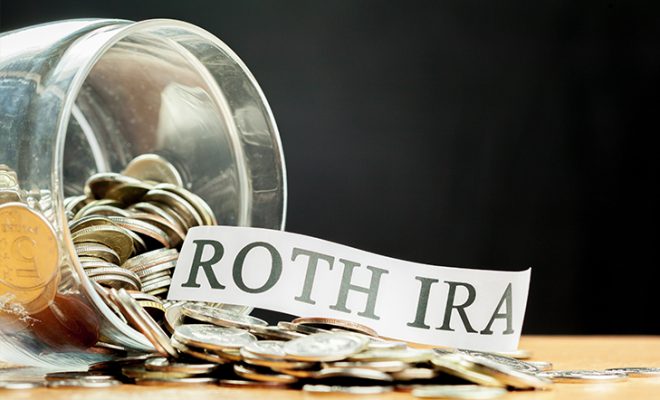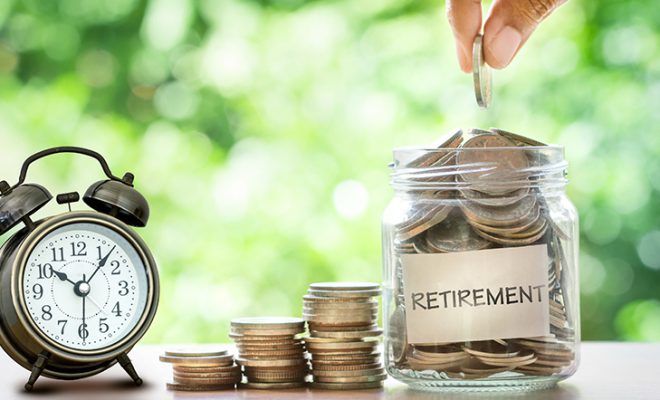What is a Reasonable Rate of Return After Retirement?

Aiming for a high rate of return on your investments is natural, but the reality is that your actual returns will vary. While it is tough to predict the exact numbers, having a ballpark figure in mind can help you plan for your retirement more effectively. Many factors impact how much your money will grow after retirement and keeping a realistic expectation is essential.
A financial advisor can guide you in aligning your post-retirement investment portfolio. This article will also explore the key factors that can help you understand a reasonable rate of return in retirement.
Table of Contents
What is a reasonable rate of return after retirement?
A balanced portfolio usually generates returns of around 5% annually. This type of portfolio typically includes a mix of stocks and bonds, which provides some growth potential while also protecting your money against market volatility. On the other hand, if you choose to maintain a more aggressive approach with a higher allocation to stocks, you can expect a slightly higher return, of around 7%. However, this comes with more risk. Many financial experts recommend being cautious and not investing in overly aggressive options in retirement. Unlike during your working years, you do not have enough time to recover from market downturns and can suffer permanent losses if things get out of hand. Instead, you can aim for a conservative approach. However, this translates to a lower return depending on how much of your portfolio is in low-risk investments.
Common retirement asset classes include stocks, bonds, real estate, and cash equivalents. Each of these carries’ different levels of risk and potential returns. You need to find the right mix to ensure your money lasts throughout your retirement. Here are some points to note about each asset class:
- Stocks: Historically, the stock market has been one of the biggest drivers of long-term growth in retirement accounts. Over long periods, the U.S. stock market, which is represented by indices like the S&P 500, has delivered average annual returns of around 7% to 9% after adjusting for inflation. However, it is essential to note that the stock market is volatile. There will be years where stocks provide higher gains, potentially in double digits. However, there will also be periods of significant losses. So, while stocks can help grow your retirement nest egg, it is important to balance potential risk by diversifying into other asset classes, such as bonds, cash, real estate, and others.
- Bonds: Bonds, whether government, municipal, or corporate, are typically much less volatile than stocks and provide a steady stream of income. Historically, bonds have provided returns that are 2-3% above inflation. This is much lower compared to stocks, but bonds also carry lower risk. Bond prices can fluctuate as interest rates rise and fall, but overall, they are considered safer investments. Many retirees use bonds to provide stability in their portfolios and reduce the impact of stock market volatility, which makes them a good addition to a retirement portfolio despite the relatively lower returns.
- Real estate: Real estate can also play a role in a retirement portfolio. However, you must note that its returns may vary widely based on many factors, like the type of the property, location, and market conditions. Real estate investments can provide both income through rental opportunities and growth through value appreciation. However, investing in real estate is not the same as investing in stocks or bonds. Unlike these options, real estate requires a more hands-on approach. It can also be hard to sell it as the values are higher, and finding the right buyer can be difficult. However, real estate has historically been a good hedge against inflation, which can provide you with diversification in retirement.
- Cash equivalents: Cash equivalents like savings accounts, money market funds, and Certificates of Deposit (CDs) are considered to be one of the safest investments as the returns are assured. While these instruments are not ideal for growth, they can provide you with financial stability and accessibility. However, it is essential to note that with inflation averaging around 2-3%, the real return on cash equivalents can be negative. Hence, these instruments can be used to park your emergency funds but not as a sole vehicle for your retirement savings.
When evaluating the rate of return in retirement, it is also important to remember that what you see on paper is not necessarily what you will earn in reality. For example, if a fund you invest in offers an 8% return on paper, the actual return that you earn could be much lower due to broker fees, inflation, and taxes. Let’s say you invest $1,000 in a fund that delivers an 8% annual return. If the fund charges a 0.5% management fee, your return drops to 7.5%. Now, with inflation at 3%, your real return is further reduced to 4.5%. So, while the nominal return may seem attractive, the real return, which actually matters, is lower. On your $1,000 investment, your real return would be $45 instead of $80 after accounting for fees and inflation.
Inflation is an essential factor to consider when estimating a reasonable rate of return. While an x% return may sound good in isolation, it can lose its sheen when inflation is considered. For instance, if inflation is 3%, a 10% return is only 8% in real terms. In the worst-case scenario, where inflation outpaces your return, your money would lose value. For instance, if your return is 5% but inflation is 6%, you will essentially lose money. This is why it is important to aim for a rate of return that outpaces inflation. Historically, stocks have been known to provide returns higher than inflation consistently, but as mentioned earlier, they come with increased risk. Bonds, while safer, may struggle to keep pace with inflation unless interest rates are particularly high. Apart from inflation, taxes can also eat into your returns. For instance, if your retirement account is tax-deferred, such as a traditional Individual Retirement Account (IRA) or 401(k), you will also need to pay taxes on any withdrawals. Depending on your tax bracket, these taxes could reduce your effective return even further.
What is a good rate of return on a 401k?
It is important to understand that there is no one-size-fits-all answer. Over several decades, 401(k) plans tend to generate average returns ranging between 5-8%. However, the actual returns can vary significantly based on various factors like the asset allocation within your plan, your risk tolerance, account fees, etc.
401(k) investments are usually spread across stocks, bonds, and cash equivalents. Each of these carries its own risk and potential returns. A key factor in determining the rate of return on your 401(k) account is asset allocation. Generally, the more stocks you have in your portfolio, the greater the growth potential. However, it is important to note that the risk is also higher in this regard. On the other hand, relatively more conservative portfolios of bonds and cash equivalents may offer lower returns but less volatility.
For instance, investors who have spent many years until retirement may opt for a more aggressive asset allocation, such as 70% in stocks, 20% in bonds, and 10% in cash. This type of portfolio could yield higher returns over time. However, it is essential to remember that an aggressive portfolio is also subject to more fluctuations in the short term. When the stock market performs well, your 401(k) investment may earn good returns, but you might see losses during downturns. Having said that, you would be able to balance out things over the long term. On the other hand, investors who are closer to retirement can maintain a more conservative portfolio with a mix of 15% stocks, 75% bonds, and 10% cash. This can lessen the chance of losses. However, this kind of conservative approach typically yields lower returns, in the range of 2-3%, depending on prevailing interest rates. While this may not seem like much, the reduced volatility can provide peace of mind as you approach your retirement. Many investors also opt for a balanced or moderately aggressive portfolio, such as a 60% stock and 40% bonds, to strike a middle ground. This type of portfolio offers the potential for reasonable growth while still offering you some level of security. Historically, a 60/40 portfolio has posted average annual returns in the 5-8% range, depending on market conditions. Moreover, your retirement age also plays a massive role in deciding your portfolio’s risk level. If you are decades away from retirement, you can afford to ride out the market’s ups and downs, which makes a higher allocation to stocks more attractive. The longer your money stays invested, the more time it has to grow. On the other hand, if you are nearing retirement, you can move towards safer options like bonds and cash equivalents to protect your portfolio from potential losses.
It is important to remember that while historical data can give you an idea of what to expect, there are no guarantees when it comes to investment returns. Unlike savings accounts, where you can predict precisely how much interest you will earn, investing in a 401(k) will not be the same. Your final returns will depend on a variety of reasons, including economic and political changes, tax laws, company performance, and global events. However, even though you cannot control the market, you can control how you invest. Maintaining a diversified 401(k) portfolio and adjusting your risk exposure as you near retirement can help you increase your chances of reaching your retirement goals within your preferred timeline. You must also regularly review your 401(k) investment and rebalance your portfolio as needed to help ensure that your investment strategy stays aligned with your financial goals and risk tolerance.
How can you build a retirement portfolio that provides a reasonable rate of return?
It can be helpful to focus on what strategies you should be using for retirement planning. Here are some things you can do:
- Keep a diversified portfolio: A good starting point is diversification where you invest your money in a mix of different asset classes, such as stocks, bonds, cash equivalents, and real estate. This can help you reduce the overall portfolio’s risk as its fate is not dependent on a single investment.
- Focus on the right asset allocation: It is essential to adjust your asset allocation over the years. You can invest more in stocks if you have time left for retirement. Early in retirement, you may still want a significant portion of your portfolio to be in stocks to benefit from their growth potential. However, as you age, especially after retirement, it is generally wise to gradually shift towards more conservative investments like bonds and cash equivalents to safeguard your savings from market volatility.
- Work with a professional financial advisor: You can consider working with a financial advisor who can help you create a suitable retirement strategy. Financial advisors can answer your questions, like what a conservative rate of return during retirement is, how to make a diversified portfolio and more. They can prepare you for your varied retirement expenses and ensure you invest in suitable options based on your risk appetite and goals.
To conclude
A reasonable rate of return in retirement depends on many factors, including your asset allocation, the fees associated with your investments, inflation, and taxes. While historical returns can provide a helpful guide, it is essential to note that the market conditions can differ over periods. Past performance is never a guarantee for the future, and it is best to be prudent. Having said that, you can expect a balanced portfolio to deliver around 5% annually in retirement, whereas more aggressive portfolios may offer higher returns but at the cost of increased risk. Make sure to consider all of these factors to create a retirement portfolio that provides both growth and financial security.
Use WiserAdvisor’s free advisor match tool to get matched with seasoned financial advisors who can help align your investment portfolio with your post-retirement goals and needs. Answer some simple questions about your financial needs and get matched with 2 to 3 advisors who can best fulfill your financial requirements.
For additional information on retirement planning strategies that can be tailored to your specific financial needs and goals, visit Dash Investments or email me directly at dash@dashinvestments.com
About Dash Investments
Dash Investments is privately owned by Jonathan Dash and is an independent investment advisory firm, managing private client accounts for individuals and families across America. As a Registered Investment Advisor (RIA) firm with the SEC, they are fiduciaries who put clients’ interests ahead of everything else.
Dash Investments offers a full range of investment advisory and financial services, which are tailored to each client’s unique needs providing institutional-caliber money management services that are based upon a solid, proven research approach.




















